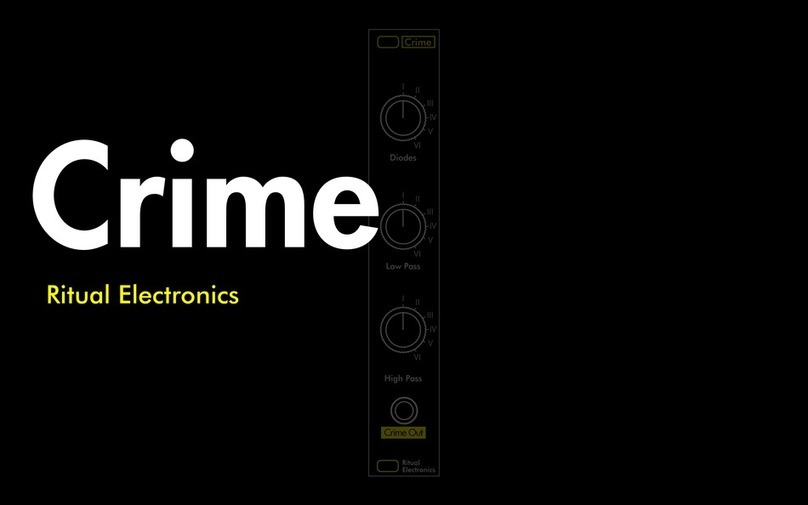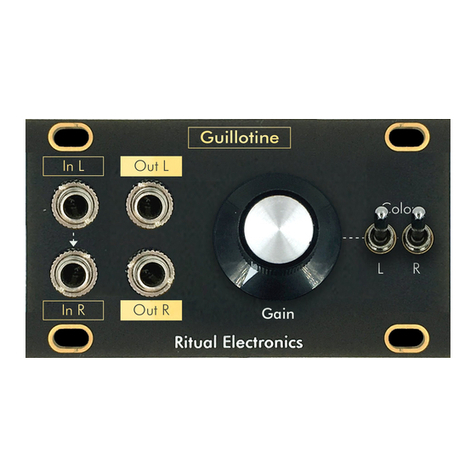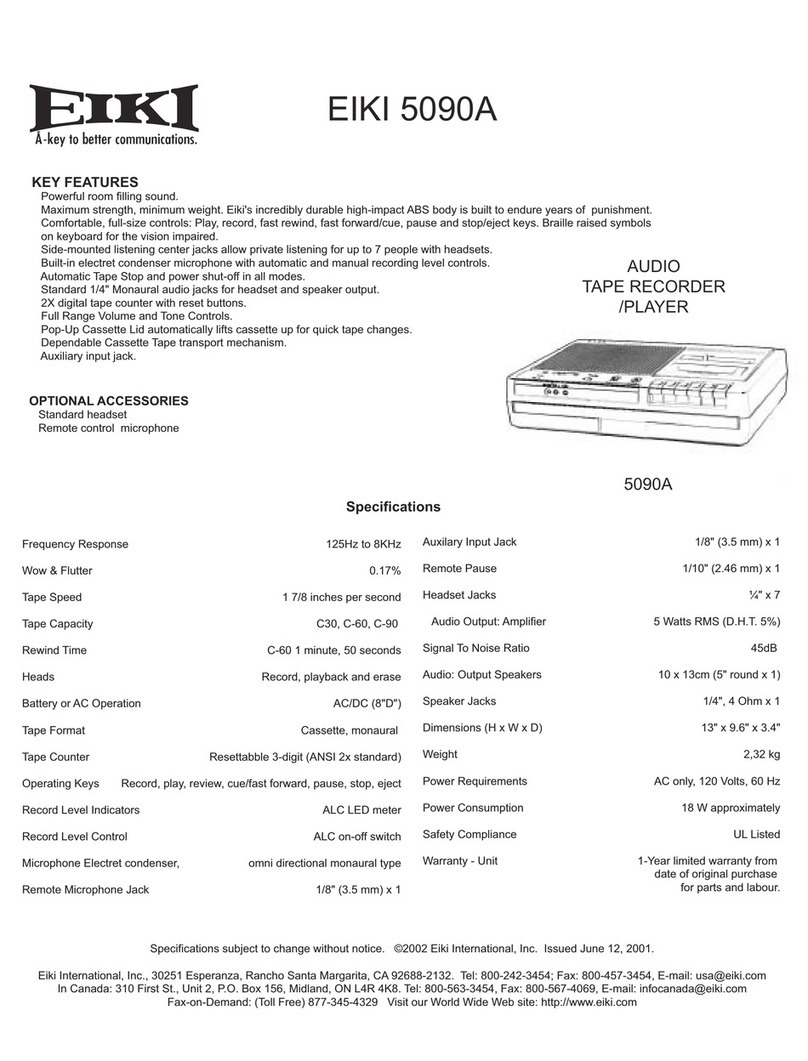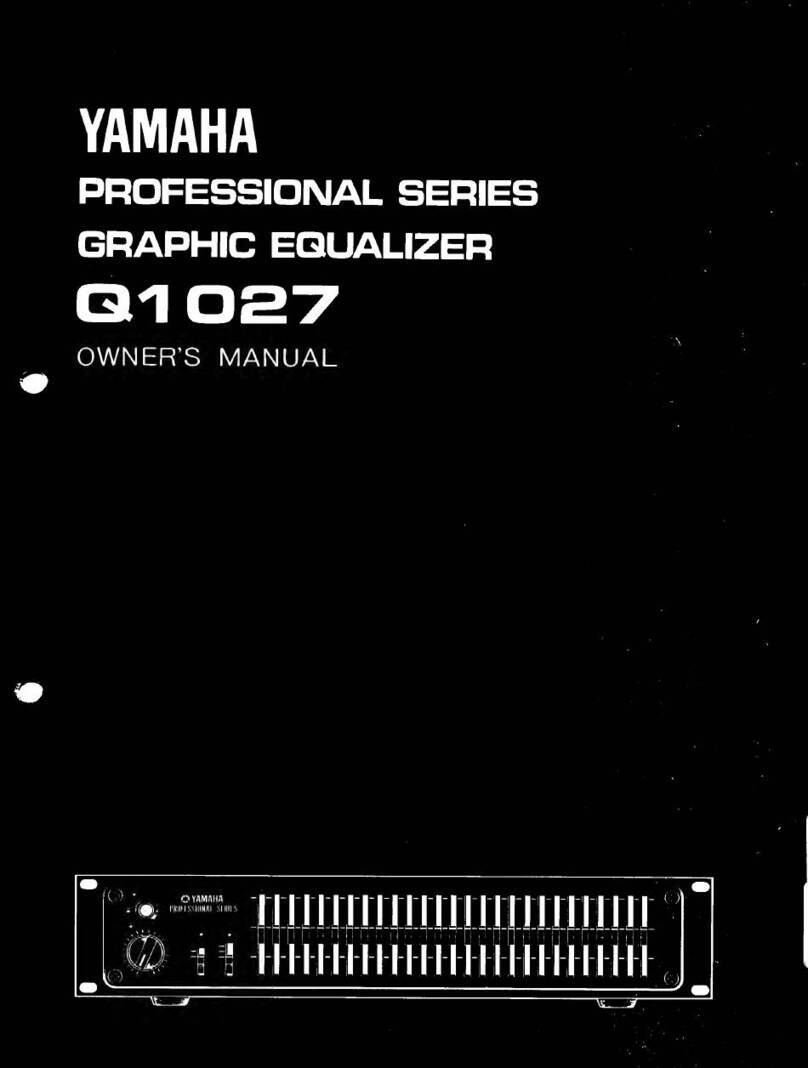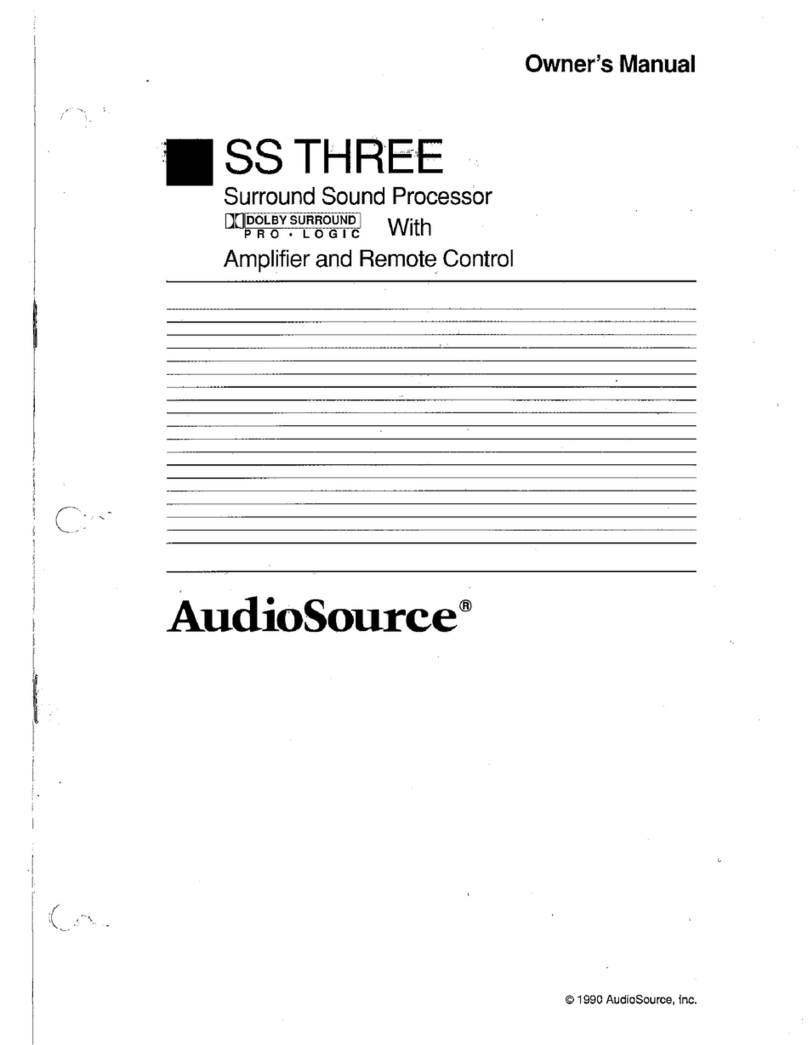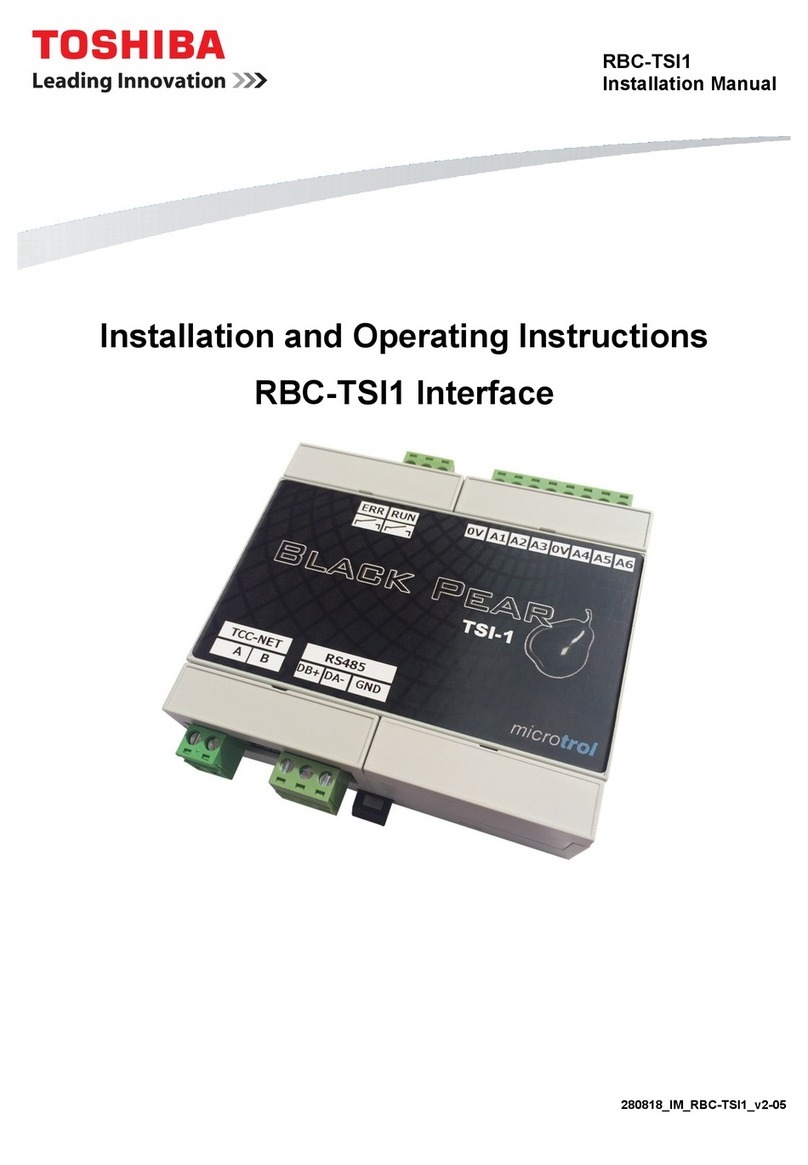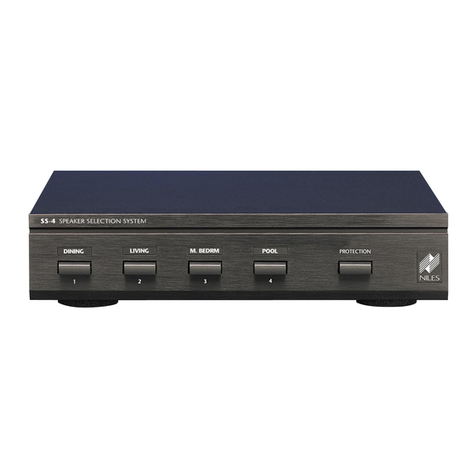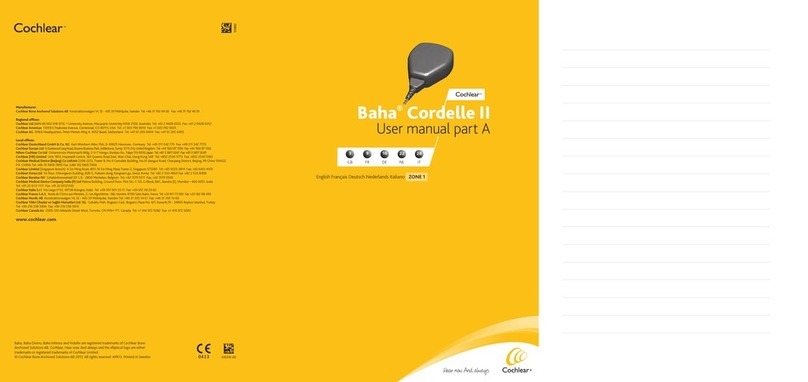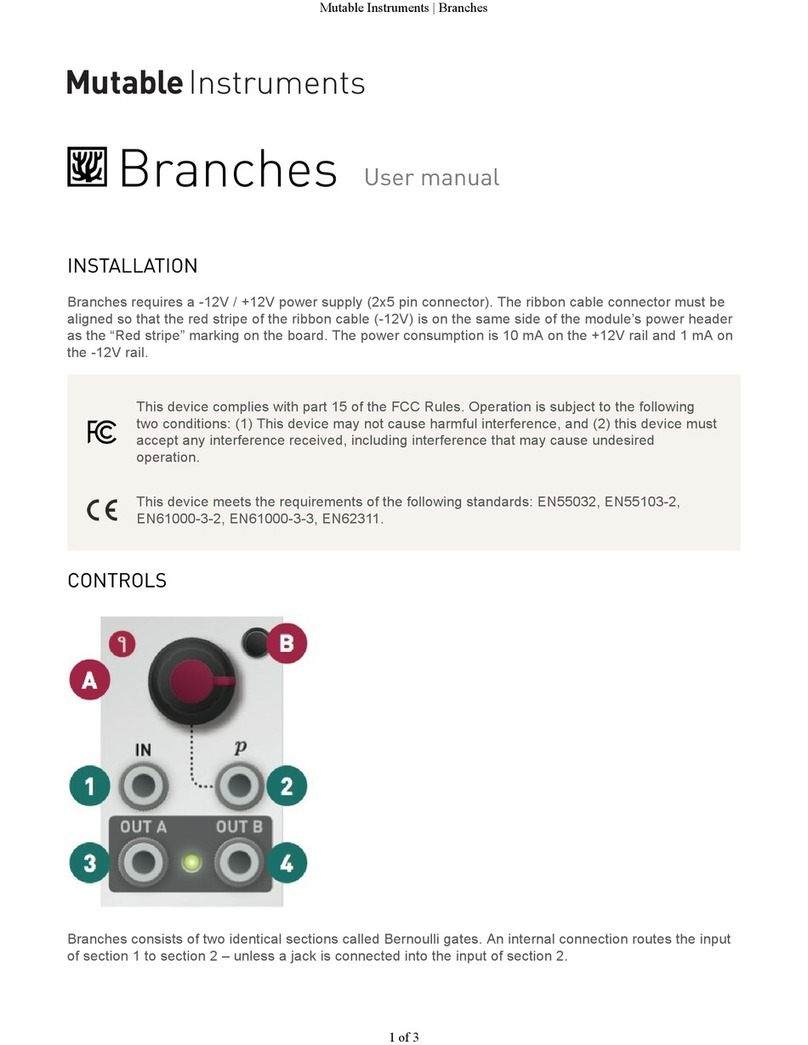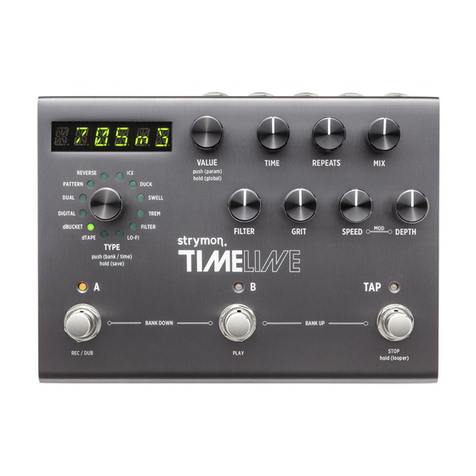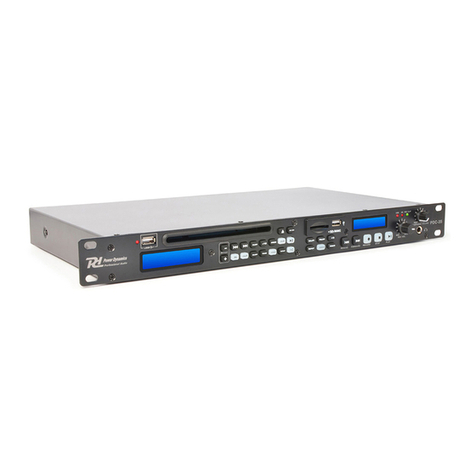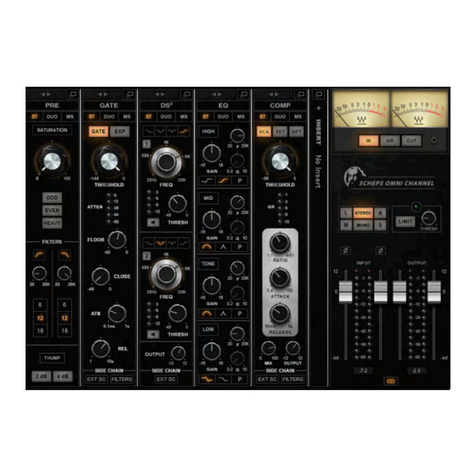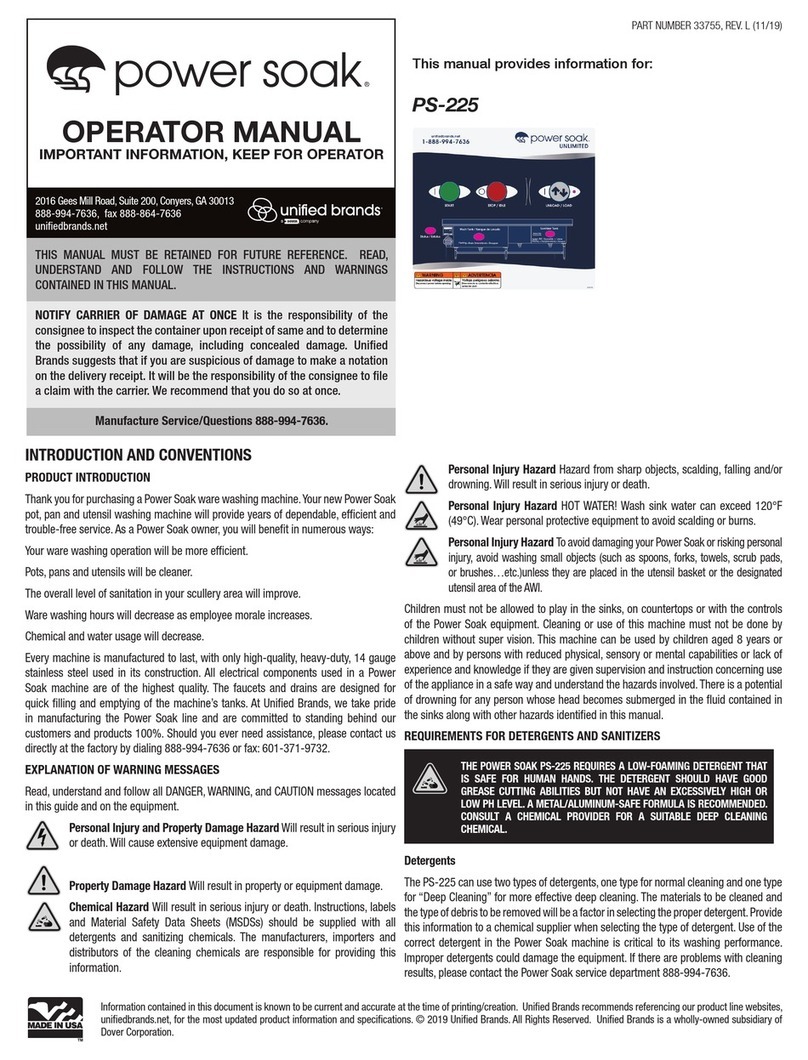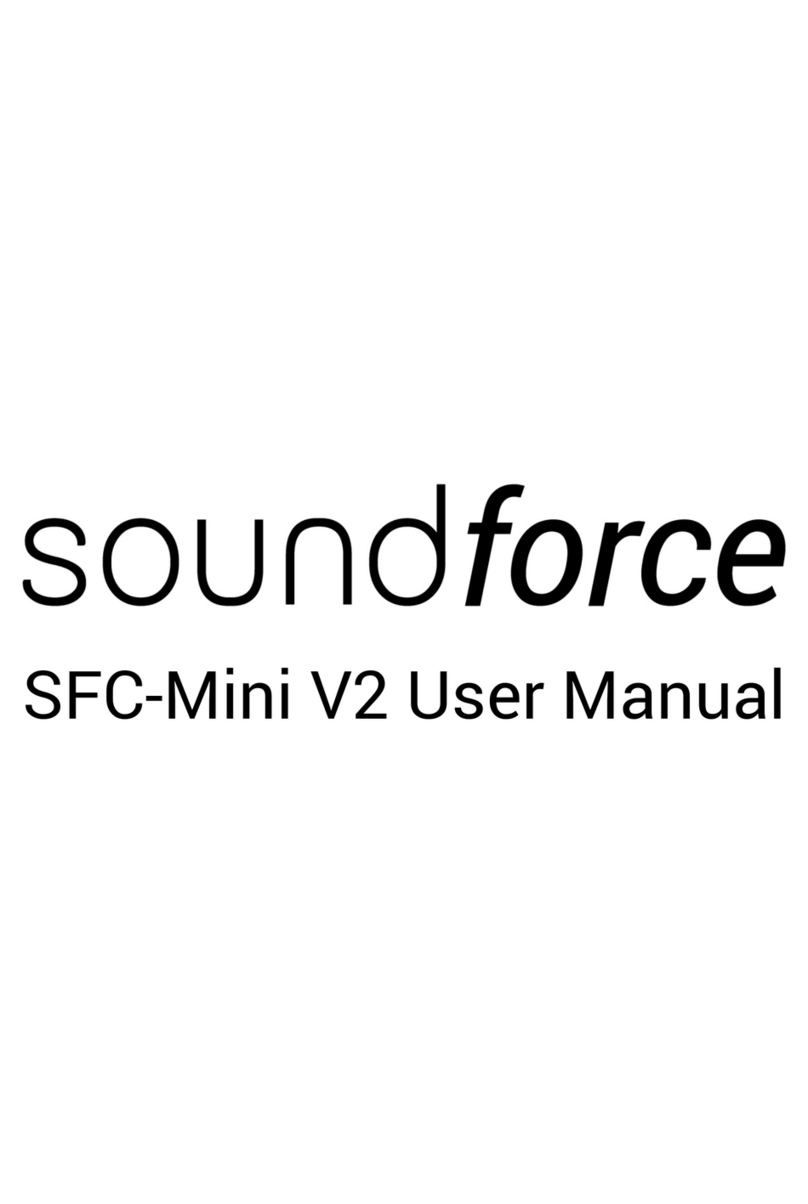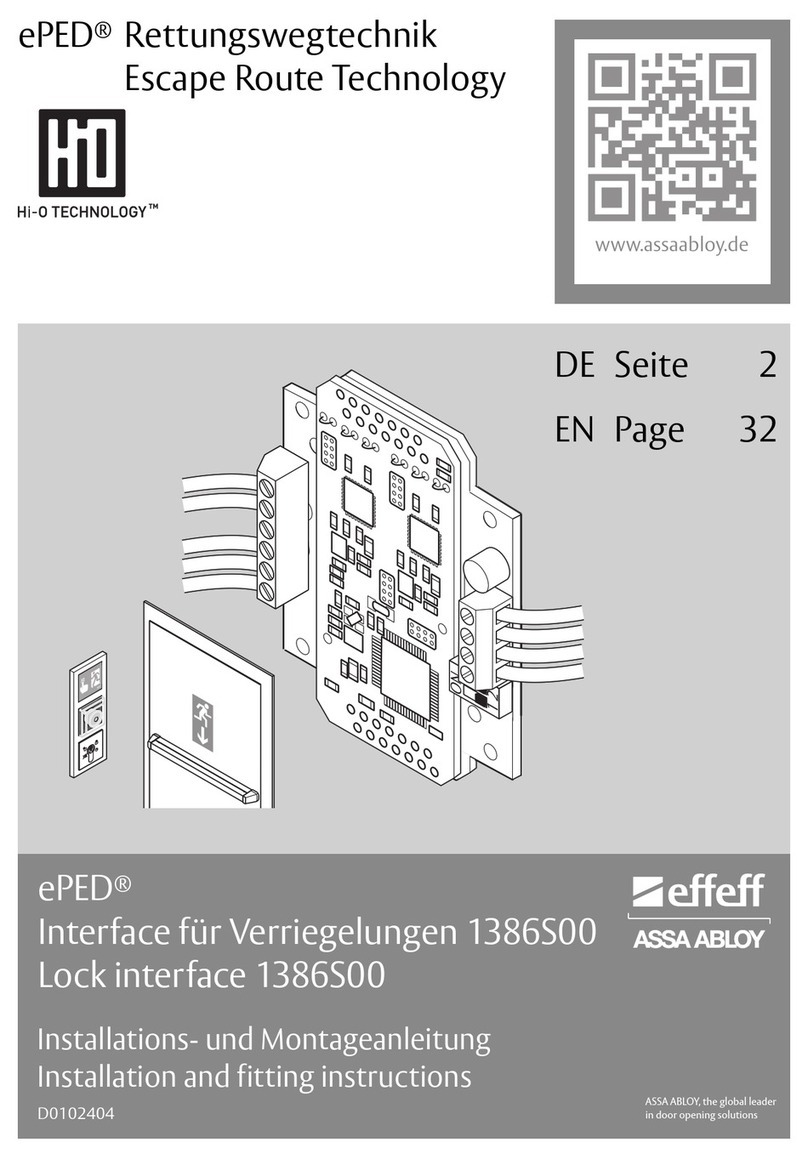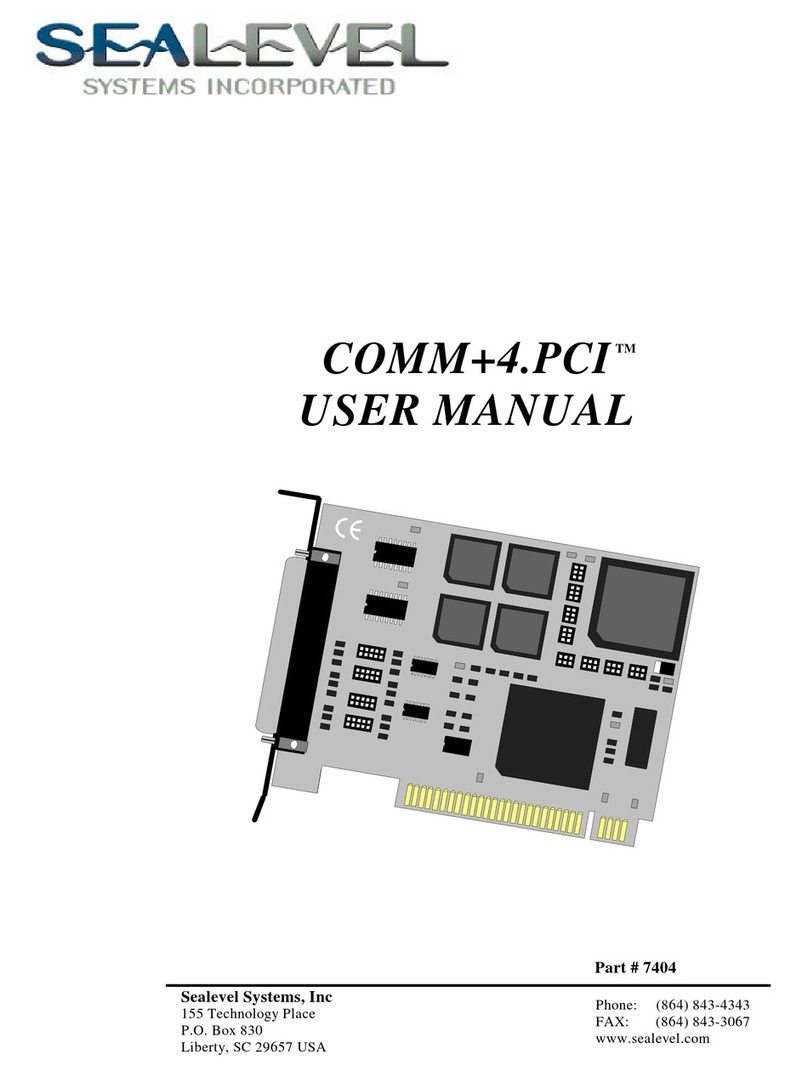Ritual Electronics Anima User manual

Ritual Electronics
Anima
Attack
Curve
Decay
_+
_+_+
_+_+_+
Attack
Curve
Decay
_+
Unipolar
Bipolar
Attack I Curve I Decay I
Gate I 1V/Oct I
Attack II Curve II Decay II
Gate II 1V/Oct II

2
Summary
03................Warranty
04................Installation
05................Overview
06................Controls
07.................Modes
08................Curves
09................1V/Oct
10................Output polarity
11................Self patching

3
Anima
Thank you for purchasing Ritual Electronics Anima.
Your module has been assembled with care in our stu-
dio in Marseille, France.
You can find your module on Modulargrid:
https://www.modulargrid.net/e/ritual-electronics-anima
For any remarks and informations, contact us at:
For video demos and patch ideas check:
https://www.instagram.com/ritualelectronics/
Limited warranty
Ritual Electronics warrants this product to be free of defects in
materials or construction for a period of one year from the date
of purchase.
Malfunction resulting from wrong power supply voltages, backwards
or reversed eurorack bus board cable connection, abuse of the
product or any other causes determined by Ritual Electronics to be
the fault of the user are not covered by this warranty, and normal
service rates will apply.
During the warranty period, any defective products will be repaired
or replaced, at the option of Ritual Electronics, on a return-to-Ritual
Electronics basis with the customer paying the transit cost to Ritual
Electronics. The return of your module is on us.
Ritual Electronics implies and accepts no responsibility for harm to
person or apparatus caused through operation of this product.

4
Installation
Always turn your eurorack case off before plugging
or unplugging a module.
Do not touch any electrical terminals when attaching any
Eurorack bus board cable.
Ritual Electronics Anima requires:
95mA on +12V
35mA on -12V
0mA on +5V
You will need 18HP of free space in your Eurorack case to
install Anima. The module is 25mm deep.

5
Overview
Anima is a dual voltage-controlled segments
generator. It can be an AD or an ASR enveloppe,
an LFO, a Digital Oscillator and even more.
Anima draws its roots in the “west coast” analog function
generators and updates them in the digital realm.
This take allows for extremely precise 1V/Oct tracking
(10+ octaves) when in cycling mode, and for the control
of the rising and falling segments (aka attack and decay)
curves without affecting timing + a few more tricks.

6
Decay knob
Sets the falling segment length
Curve knob
Sets the curvature of both segments
Polarity switch
Sets the output signal polarity
and voltage
Curve attenuverter knob
Dial in the right amount of control
voltage
Decay attenuverter knob
Dial in the right amount of control
voltage
Out
Outputs signal according to the polarity
switch
Mode switch
Chose the mode of operation
AD, ASR, Cycle
Attack knob
Sets the rising segment length
Attack, Curve, Decay CV inputs
External control for each parameter
Gate input
Use it to trig the envelope or reset the
cycle
1V/oct input
Can be used to play harmonically when
cycling or as a CV input for both Attack
and Decay
Activity LED
Glows according to the output
Attack attenuverter knob
Going left the CV input is subtracted
from the Attack knob value. To the right
the CV input is added.
Anima controls
Attack
Curve
Decay
_+
_+_+
_+_+_+
Attack
Curve
Decay
_+
Unipolar
Bipolar
Attack I Curve I Decay I
Gate I 1V/Oct I
Attack II Curve II Decay II
Gate II 1V/Oct II
EOC output
Outputs a trig at the end of decay /
release / cycle

7
Modes
AD Mode
The module takes any signal as an input, turns it
into a trigger to launch a rising segment (attack)
and a falling segment (decay). The length of
these segments are defined by Attack and Decay
knobs. They are independent of the input signal.
ASR Mode
The module takes any signal as an input and
turns it into a gate. The attack phase is initiated
at the rising edge of the gate, the voltage is then
sustained during the length of the gate before
starting the release phase (controlled by Decay
knob).
Cycle Mode
Cycle loops the rising and falling segments ac-
cording to their lengths. Long lengths will result
in slow, low frequency oscillations (max 80s).
Short lengths rising and falling lengths will go to
audio speed (up to 2kHz). An incoming signal
can reset the LFO or sync the oscillator.
Attack phase
Trigger in
(V)
(t)
Decay phase
Attack phase
Gate in
Sustain phaseR elease phase
(V)
(t)
Attack phase
Trigger in
(V)
(t)
Decay phase
Cycle

8
Curves
The Curve parameter goes well beyond the usu-
al Lin/Log control. It morphs smoothly between
several curvatures (including the classic log, lin
and exp) without affecting the rising and falling
times.
When tweaked in envelope mode, Curve opens
up new performance possibilities. Changing the
length of a segment is not always the solution.
Modifying the curve shifts the emphasis of the
envelope for nuanced phrasing.
Attack phase
(V)
(t)
Decay phase
Attack phase
(V)
(t)
Decay phase
Attack phase
(V)
(t)
Decay phase
Attack phase
(V)
(t)
Decay phase
Attack phase
(V)
(t)
Decay phase
Logarithmic Exponential
NotchBell
Linear

9
1V/Oct
The 1V/Oct input turns Anima into a very capable
digital dual oscillator - when in cycle mode - with two
types of frequency modulation and voltage controlled
waveform crossfading.
Due to its digital nature, Anima is capable
of tracking well over 10 octaves with no drift.
The 1V/Oct is also useful in “envelope mode”
to shorten envelopes when an oscillator pitch gets
higher thus recreating the behaviour of acoustic
plucked instruments.
_+
_+
_+_+
Attack I Curve I Decay I
Gate I 1V/Oct I
Attack II
Gate II 1V/Oct II
1V/Oct I 1V/Oct II

10
Output polarity
Anima’s channels can be individually set to output
unipolar or bipolar signals.
If used as a “classic” envelope we recommend using
the unipolar (0 to 8 volts) mode. Usually VCAs only
“see” positive voltages.
To take advantage of Anima as an oscillator
we recommend you use the module with a bipolar
output. The output will then swing between
-5 and +5 volts (10vpp as recommended for sonic
signals according to Eurorack standards).
There is no rules though. Flip the switches and
experiment. It makes a pretty good performance
tool too, capable of drastically affecting a patch.
Unipolar
Bipolar
Unipolar
Bipolar

11
Self patching
Anima can be self patched for cross modulated,
feedbacked signal generation.
From subtle control of a channel’s parameter by
the other channel (make those envelopes groove!)
to complete cross patching audio mayhem there
is a world to explore.
Anima has been designed to encourage this
exercise. Get those stackables or multiples out
and start patching all these ins and outs together.
This way it is possible to generate very complex
feedbacked control voltages, capable of complex
changes at the flip of a switch or at the slightest turn
of a knob. Speed it up and you have chaotic audio
generator. Experiment...
Attack
Curve
Decay
_+
_+_+
_+_+_+
Attack
Curve
Decay
_+
Unipolar
Bipolar
Attack I Curve I Decay I
Gate I 1V/Oct I
Attack II Curve II Decay II
Gate II 1V/Oct II
Table of contents
Other Ritual Electronics Recording Equipment manuals
